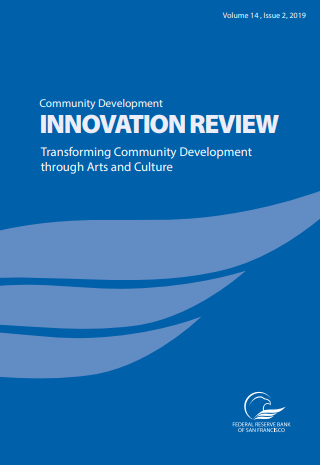How Arts & Culture Kindle Opportunity
In a recent publication from the San Francisco Federal Reserve, LISC CEO Maurice A. Jones offers a chapter detailing the role of arts and culture in the community development toolbox. Creative placemaking, writes Jones, “unleashes community power and innovative solutions that drive economic prosperity.”
The excerpt of the below chapter was originally published in:
Community Development Innovation Review: Transforming Community Development through Arts and Culture
By Federal Reserve Bank of San Francisco
Integrating Arts and Culture into Community Development to Improve Outcomes
By Maurice A. Jones, LISC CEO
Working in historically marginalized communities requires commitment over the long term, forging partnerships with a range of organizations, digging into the root causes of poverty, and empowering residents and stakeholders to plan their own futures. The Local Initiatives Support Corporation (LISC) is one of the country’s largest organizations supporting efforts to revitalize communities and bring greater economic opportunity to residents. Together with residents and partners, LISC forges resilient and inclusive communities of opportunity across America—great places to live, work, visit, do business, and raise families. Over the past 40 years as a community development intermediary, LISC has deployed $20 billion in community development resources, leveraging $60.4 billion in investment. At our core, we are dedicated to a holistic approach to working with communities to improve quality of life, evaluate and address social determinants of health, and ensure economic opportunity for all.
Five years ago, LISC began to think more deeply about how artists and community developers might come together to solve problems and build new pathways for community growth. Although LISC has a long history of investing capital in the development of arts and cultural facilities, we were unfamiliar with the practice of creative placemaking. We were interested in exploring opportunities in this space, but we were unsure where the path would lead. Yet our hunch was that partnering artists with community developers might spark a new way of working that would inspire collaboration, improve economic and physical conditions in neighborhoods, create social cohesion, and eventually build deeper trust between people and organizations—the very outcomes that are central to achieving our mission.
Currently, LISC defines creative placemaking as “activities that connect art, culture, and community in order to create resident-driven solutions to neighborhood challenges.” This work includes an asset-based approach that invests in cultural resources, supports processdriven planning, and drives economic inclusion. This article describes the core values that drive our creative placemaking efforts, the outcomes we have seen as a result of them, and the lessons we have learned along the way
